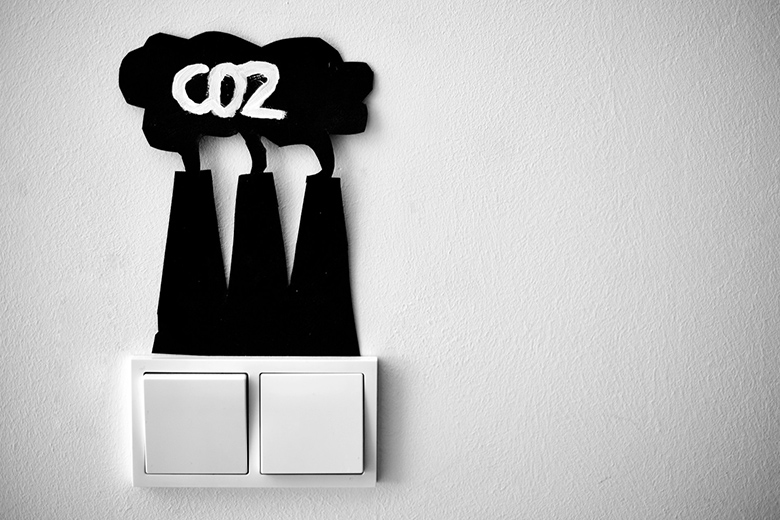As global efforts intensify to reduce carbon emissions, Louisiana, specifically Central Louisiana, is positioning itself as a national and potentially global leader in carbon capture and storage (CCS). With its unique geological formations and recent regulatory developments, the state offers both the physical and administrative conditions needed to support CCS deployment. A recent conversation with a petroleum engineer helps explain why Louisiana is emerging as a key region for the industry, and what challenges remain.
Louisiana’s Geography and Regulatory Primacy
A Geological Powerhouse for Storage
Louisiana offers a uniquely favorable subsurface environment for carbon storage. The state is bordered by the Gulf of America, is interlaced with river systems, and is underlain by deep saline aquifers and porous sedimentary rock formations. These features make it well-suited for long-term CO₂ sequestration. Its flat coastal plains and delta basins offer accessibility while its proximity to major industrial corridors enhances logistical efficiency for transporting and injecting carbon dioxide.
The Bayou State’s deep saline formations and porous rock reservoirs provide the ideal storage space, covered with capstone rock, to store CO2 safely. Located along the Gulf Coast, Louisiana also benefits from existing energy infrastructure and proximity to major emitters, reducing transportation costs and simplifying operational logistics.
Regulatory Primacy Over Class VI Wells
In February 2025, the U.S. Environmental Protection Agency granted Louisiana primacy over Class VI wells. This primacy designation authorizes the state to oversee and enforce regulations concerning the underground injection of carbon dioxide for long-term geologic storage. Class VI wells are specifically designed for permanent CO₂ sequestration in deep subsurface formations, and their proper regulation is critical for the safety and scalability of CCS efforts.
With this new authority, the Louisiana Department of Energy and Natural Resources (LDNR) now manages the permitting and oversight process. This shift streamlines what had historically been a lengthy and federally controlled system. Under EPA management, the permitting process for Class VI wells could take several years, often delaying investment and stalling momentum. By contrast, state primacy allows for more localized, responsive decision-making that reflects Louisiana’s unique geological and industrial landscape.
Louisiana is now the third state, after North Dakota and Wyoming, to receive Class VI primacy. This regulatory autonomy gives Louisiana a critical competitive edge, complementing its robust oil and gas infrastructure and deep subsurface expertise. Industry experts expect the permitting efficiencies to accelerate private investment and advance CCS project development across the state.
Decades of CO₂ Injection Experience
Louisiana brings over 40 years of experience with carbon dioxide injection, largely through enhanced oil recovery (EOR) projects that began in the 1970s. This long-standing engagement has fostered operational knowledge, safety protocols, and a technically skilled workforce. Today, the experience gained through EOR is being redirected toward permanent CO₂ sequestration, reinforcing Louisiana’s role as a national leader in CCS deployment.
Community Concerns
Addressing Public Skepticism
Despite Louisiana’s technical readiness, many residents remain skeptical about the safety and benefits of CCS. Concerns often focus on the risks of groundwater contamination, seismic activity, and questions of who ultimately profits from these projects. For those living near proposed storage sites, these worries are often compounded by a broader distrust of large-scale energy infrastructure.
Experts note that the skepticism is often less about the science of CCS and more about a lack of transparency and inclusion. While the technology has widespread support among engineers and scientists, public trust must be earned through consistent engagement. This involves not just technical assurances, but also clear communication, community education, and the inclusion of local residents in economic benefits. Building trust is essential to making CCS development more equitable and broadly accepted.
In selecting project sites, state regulators are making deliberate efforts to avoid ecologically and culturally sensitive areas. Considerations include wetlands, historic landmarks, and vulnerable ecosystems. Environmental justice principles are increasingly integrated into planning, reflecting lessons from past industrial developments that disproportionately affected marginalized communities. By embedding these values into the permitting process, Louisiana is promoting a more inclusive and responsible approach to development.
A Path Forward
Louisiana’s combination of geological suitability, regulatory authority, and industry experience uniquely positions it to lead the nation in carbon capture and storage. With billions in potential investment and significant job creation on the horizon, the state has much to gain. However, competition from neighbors like Texas and Mississippi remains strong. To stay ahead, Louisiana must act with urgency while maintaining public trust, environmental integrity, and transparent governance.
With the right blend of science, policy, and community-centered planning, Louisiana has the potential not only to lead the nation—but to set a global standard—for responsible and effective carbon capture and storage.














